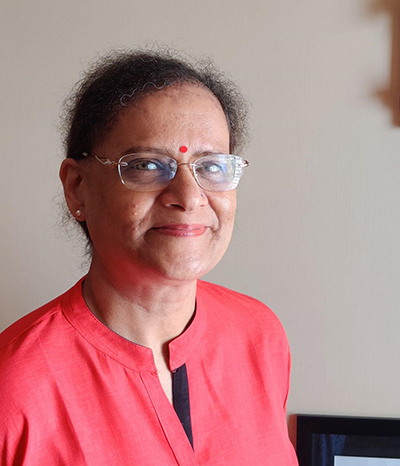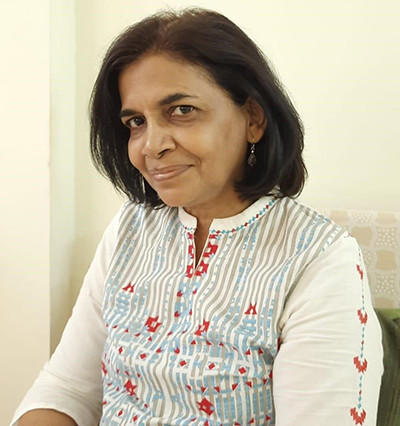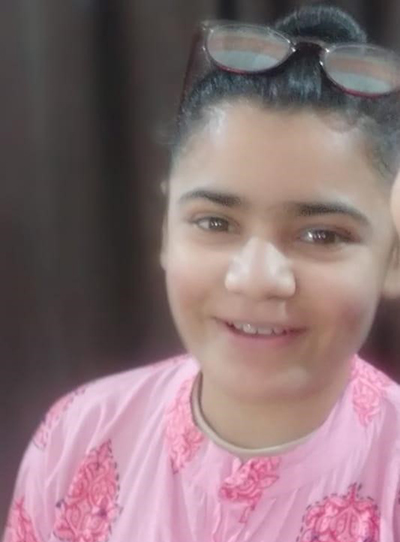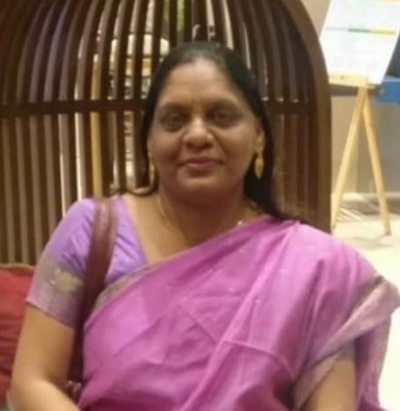Put the Apple away to Meet these Doctors!
The celebration of National Doctor's Day is a genuine attempt to highlight every doctor’s importance and express our gratitude by honoring one of their most significant representatives. When the pandemic hit India, the doctors took charge and were the first responders to the battle. People have realized that there aren't enough doctors to meet the needs of people in this huge country.
Working as a doctor is difficult and treating someone who with deafblindness takes a lot of patience and empathy. In contrast to popular belief, being deafblind doesn't necessarily imply that you're completely deaf or blind; most people with deafblindness have some residual vision and/or hearing. It is a unique disability.
Here are some of our heroes who have made sure that the pandemic does not hinder the health of our children with deafblindness.

Dr. Vandana Nath is an ophthalmologist with over 20 years of experience working with people with deafblindness. She says, “Seeing how much of a difference I can make in someone's life, even if she has only made a small contribution, has kept me going.” She goes on to say that “it is a two-way process that requires a team effort rather than an individual effort.”
We know the importance of parents in the lives of people with deafblindness. What do you advice these parents to practice?
The training program's aim is to make the child self-reliant, and it actually begins with the parents rather than the child. The parents must be reassured by the doctors, and the doctor needs to empathize equally with both parents and children to make the process easier. During the training program, there are many milestones involved that must be met by the child in order to achieve the expected results. In such cases, results can take time, and the most important practice that parents need to develop is patience.
What has been the most memorable experience while treating a person with deafblindness?
One of the most rewarding cases in my career was when I met a two and a half year old child who needed my assistance. The child was deafblind with intellectual and physical disabilities. The medical history of the child showed that she was born two months prematurely.
Me along with other doctors discovered that the child had a severe heart failure shortly after delivery and had to undergo major heart surgery at two and a half months old to fix the holes in her heart. Not only that, but she also had cataracts in both eyes. We also found out that the child had rubella syndrome, which occurs when a pregnant woman is infected with the German measles virus during the first or second trimester of pregnancy, causing the kid to be born with various abnormalities such as heart defects, cataracts, and hearing impairment.
We noticed that, despite the fact that her cataract had been removed, no lens implantation had taken place. So, the first thing we did was check her numbers, realizing that she was wearing number 11 glasses. The child got better and better every six months as a result of this step.
Now the child has been looking after her house for about 20 years, has studied, wears hearing aids and spectacles, is self-sufficient, can handle all household chores and takes care of her younger brother. She not only uses her vision to the best of her ability and training, but she also learned sign language as a result of that vision correction.

Dr. Ira Almeida has been a pediatrician since 1990. In her 31 years of service, she was in charge as medical superintendent from 2015 to 2020, she had a lot of opportunities to make changes that she always wanted to, and now she is back to being a senior pediatrician.
How important a role does empathy play in treating people with deafblindness?
When working with children with disabilities, we need to understand that they are there to address their disability and help them reach their full potential. So that all aspects of their development, including physical growth, social growth, and emotional growth, are covered. It is to reassure them, particularly about their sexual needs, as many parents are concerned about whether or not their child will marry or have children.
How critical is the role of the family?
Because communicating with these children is tough, the involvement of the family is critical since they spend the most time with the patient and can often provide you with tips on how to connect with them. Once the patients realises you are empathizing with them, half of the work is done because they no longer feel abandoned or isolated.
As per her, the sooner the parents provide them with means of communication, the better the patients' outcomes are. Also, depending on the predominant factor of the children, they use both verbal and nonverbal communication methods, such as eyes, brows, and body language.
How accessible is treatment for people with deafblindness in hospitals?
Compared to 30 years ago, when there were few facilities to diagnose and manage such cases, we now have district early intervention centers and a lot more staff who are trained to handle it. However, the patients still have difficulty reaching the centers or accessing the facilities, for example, buses and trains are not disabled-friendly.

Dr. Deepika Khatri has been an Occupational Therapist for 5 years. As the training program is a long-term therapy that can take up to ten years.
How do you go about giving hope to people with deafblindness and their parents?
It's crucial to maintain hope because the patient may become bored if they have to continue the same routine for so long. Setting short-term goals may play a big role in motivating the child and the parent, depending on their symptoms, because they feel a sense of accomplishment when achieving such goals.
Even the parents participate and get involved in the training sessions under my supervision. Since many times the parents have no idea what their child is going through in terms of training, and this motivates them and makes them less dependent on the therapist.
Dr. Tripti Srivastva has been associated with the pediatric sector for the past 25 years. She has been working with people with deafblindness for the last 16 years and was also associated with the Helen Keller Institute.
How does one learn to treat a child with deafblindness?
It was initially difficult to interact with children with deafblindness, but I learned sign language and communicating with them became easier. Gestures have always been the most expressive way for her to understand a child’s feelings. I believe that the basics of sign language should be taught in school so that others can help people with deafblindness or hearing impairment.

How important is communication while dealing with people with deafblindness?
Since they have 2 senses which are compromised it takes a little more to understand and help them. She narrates her first day at the. She says “I remember my first day at the Helen Keller Institute. I knew a lot of things but I was lost. I did not know how to communicate with them. I learned sign language with the help of a teacher but also a little girl with who I interacted with every morning in the institute. Communication is important but one should know how to carry it out.
How has treating people with deafblindness online been?
Working with children with deafblindness has been challenging in this pandemic because the interaction is one of the main factors that we don’t have access to. The children had been trained at the centers but due to the pandemic, I have to teach them online. I have been doing this by giving their parents training which they passed on to their children. It is not as effective as it used to be when I was able to interact with them directly.

Dr. Naveen Kansal is a physiotherapist and has been practicing since 2008 and has been working with people with deafblindness since 2015.
What is your opinion on learning Sign Language to be able to communicate with people with deafblindness?
I believe that basic sign language can be taught in school for anyone to be able to help a person with deafblindness. Vision and hearing are two main senses for the development of a child, therefore empathy is one of the biggest factors which needs to be present when taking care of a child with deafblindness. I have had to rely on teachers to communicate with children during my physiotherapy sessions at the start, but now I have made a bond with those children and need less help from the teachers.
How difficult has the pandemic been to treat people with deafblindness?
The pandemic has made it really hard for everyone to interact but we give hope and strength to the children through calling them and talking to them and their parents. I have had to rely on parents to be able to teach their children virtually in this pandemic.
We appreciate our doctors who have made the lives of children with deafblindness better. They have eased the anxieties of parents who didn’t know any better. They are the lighthouse guiding people with deafblindness on lost boats to be the best versions of themselves. Reminding them that a disability does not make them less human. In the pandemic, our doctors have been with our parents, teachers, and children 24/7. They are our heroes and they have made a difference that no one else could.
Written By
Meet Patel and Grishma Vekaria
Communication Intern




